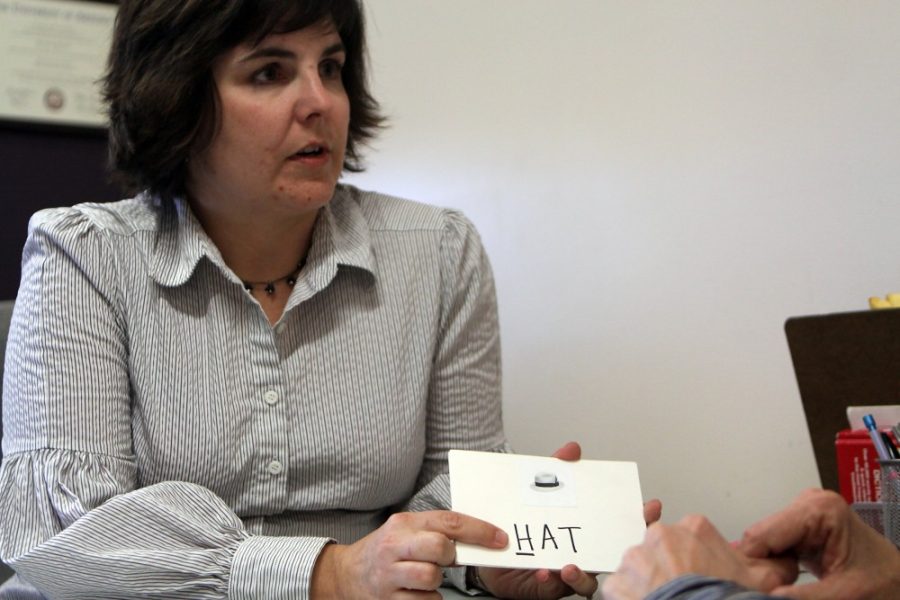The UA has received a $2 million grant from the National Institutes of Health for its next 5-year phase of aphasia research.
Aphasia is an acquired impairment of language, said Dr. Pélagie Beeson, head of the Department of Speech, Language and Hearing Sciences. In other words, there’s damage to the part of the brain important for language, she said. That portion of the brain is located on the lateral side of the left hemisphere.
This is the sixth year of aphasia research for the Aphasia Research Project and the next phase will involve written and spoken language, Beeson said. Doctors will work with patients one-on-one and conduct MRI exams for individual examinations.
“The science of understanding the brain and how the brain supports language is very interesting,” Beeson said.
Depending on each patient’s situation, treatments may include reading, writing words, coming up with names for things and composing sentences.
Vascular disease, The most common cause of aphasia, is most often seen in older adults after a stroke, Beeson said. In a healthy brain, there is an outer core of gray matter and an inner core of white matter. For someone who has had a stroke, neurons may be lost in a specific area.
“Over time, it basically looks like a fluid-filled hole in the brain,” Beeson said.
Other causes are head injuries or head trauma. On average, aphasia is found in adults who are 67 or 68 years old.
But a child could have aphasia if they suffered brain damage after birth, she said. Children also have more adaptable brains that tend to recover from damage more efficiently than adult brains.
“By the time you’re an adult, the brain is organized in a fairly specific way,” Beeson said.
She added that aphasia is not really an impairment of intellect. Someone can have good thinking and reasoning processes, but may have problems with language, she said. A person may know in their mind exactly what they want to say, but it doesn’t always come out that way in conversation.
In teaching, doctors look at what an individual is likely to relearn, Beeson said. Patients have daily homework so they can work on their writing or speaking. It is structured so they have handwritten homework and a DVD for more human interaction.
Typically, doctors see a patient twice a week for an hour, Beeson said.
For individual examinations, doctors also perform behavioral tests to determine what a patient can still do and what is difficult for them. They examine talking, listening, pointing, reading and writing. To target where the damage in the brain is, a high-resolution MRI brain scan is conducted, Beeson said.
The MRI allows doctors to see what the brain looked like before and after treatment. They also do functional brain imaging to see what part of the brain is active, she said.
When patients recover, they can continue to improve for many years if they work on their cognitive skills, she added. Patients can take advantage of the healthy part of their brain in order use it more effectively, Beeson said.
“Working with the patients is wonderful because they’re very motivated and there are many instances where the outcome improves the quality of their life,” Beeson said.









